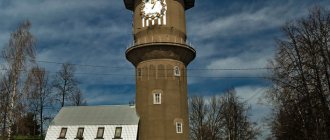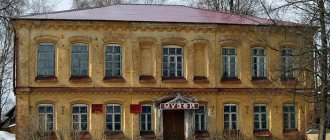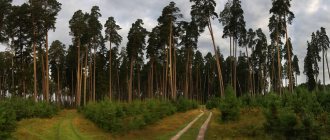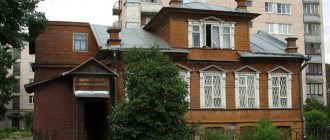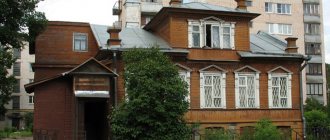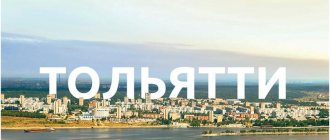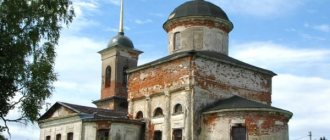The Rostov Kremlin, located in the central part of the city, can be called the main attraction of Rostov the Great. Not intended for defense, the complex consisting of several buildings was built in the 17th century as the residence of the first persons of the local diocese. The Rostov Kremlin combines several churches, a belfry, 11 towers and other small buildings. Temples and museums are open to the public.
INTERESTING. The Rostov Kremlin can be seen in the famous film by L. Gaidai “Ivan Vasilyevich Changes His Profession”, it was here that footage of the royal life was filmed, and the ringing of the bells of the Belfry can be heard in the films “Peter the Great”, “War and Peace”, etc.
Assumption Cathedral
The exact date of construction of the Assumption Cathedral, which is part of the Rostov Kremlin complex, cannot be established; the temple burned and was rebuilt many times; the brick building of the cathedral from 1512 has survived to this day. Next to the temple there is a belfry. The largest of the 15 bells weighs 32.7 tons.
Inside the cathedral, frescoes from the 16th–17th centuries found during restoration, an iconostasis in the Baroque style, and the relics of Rostov saints and ruling bishops are preserved.
Museum "Russian Vetrograd"
Vetrograd is an old word. It means “garden” or “vineyard.” In front of the museum you can see an unusual labyrinth. It is made of many stones. In ancient times, people believed that a young man who found a way out of the labyrinth became a mighty warrior and could lead the Russian army into battle.
History is alive in the museum building. You can travel back several centuries and see how people used to live. And then take a walk along the magical path. Russian heroes and epic characters await visitors there. Here you can see Emperor Peter I, the hero Alyosha Popovich, and the mermaid from Pushkin’s fairy tale.
Epiphany Abraham Monastery
The Epiphany Abraham Monastery is the oldest monastery in Rostov, located on the shore of Lake Nero. According to legend, the monastery was built on the site of the overthrow of the idol of Veles by the Venerable Abraham of Rostov with a staff, which John the Theologian himself handed to him upon meeting. Over time, the believers who came to the Reverend formed a monastery.
The monastery suffered greatly during the Polish invasions of Rostov, and later with the advent of Soviet power. From 1994 to this day, restoration work has been carried out in the monastery, there are workshops and a refectory at the monastery.
The Rostov Kremlin is the main attraction of Rostov the Great
This historical monument was seen by all viewers of the wonderful movie “Ivan Vasilyevich Changes His Profession.” Scenes of the adventures of Georges Miloslavsky and Ivan Vasilyevich Bunshi in the 16th century were filmed on the territory of the Rostov Kremlin. Another time paradox resulted - the role of buildings that existed in the 16th century was filled by buildings from the late 17th century. The entire ensemble of the Rostov Kremlin was erected in 1670 - 1683. “The Garden of Eden surrounded by powerful walls with a mirror of a pond in the middle” was invented and brought to life by Jonah (III) Sysoevich, Metropolitan of Rostov and Yaroslavl.
Strictly speaking, it is not very correct to call the Rostov Kremlin that way, since it has no defensive functions, and the Kremlin is, first of all, a fortress. Nevertheless, the name stuck, and it suits this complex of buildings much better than the “Bishops’ House.”
In addition, the “Rostov Kremlin” is a State Museum-Reserve, located on the territory of the same name, but without Cathedral Square and the Assumption Cathedral - they fall under the jurisdiction of the Russian Orthodox Church. In total, the museum-reserve includes 20 real estate objects.
The territory of the Kremlin is divided into three zones. The first, western, with the Assumption Cathedral, Belfry and Cathedral Square, as already mentioned, was transferred to the Russian Orthodox Church. In the second there is the Church of St. John the Evangelist, Samuel's Building, the Red Chamber, the Church of the Hodegitoria and other buildings. In the eastern sector, in the Metropolitan Garden, there is the Church of Gregory the Theologian, the Apothecary Garden and the White Chamber.
A simple entrance ticket to the Rostov Kremlin costs 70 rubles. This is the price to pay to admire the buildings from the outside and from the ground. For everything else you will have to pay extra. The same walk around the Kremlin with a visit to the passages on the walls will cost 510 rubles. To visit the exhibitions you need to pay from 70 to 200 rubles. There seem to be benefits, but, for example, children, large families and pensioners can visit the Kremlin for free only one day a month.
Gate Church of St. John the Evangelist
This temple was the last of the buildings erected in the Rostov Kremlin. One of the temple paintings, the so-called temple inscription, directly speaks about this. With the typical five-domed architecture of a Russian church, located on a high basement, the Church of St. John the Evangelist seems light and directed upward.
After restoration, the Church of St. John the Evangelist became the main entrance to the Rostov Kremlin. To align with the outer wall, two round towers were added to it. Between them is an entrance portal with three arches on the first floor and five windows on the second.
The temple burned down twice. In the 19th century, the Church of St. John the Evangelist was going to be dismantled into bricks due to its dilapidation, but local patrons and local historians managed to defend the temple. The tornado of 1953, which affected the whole of Rostov, almost destroyed it altogether. Surprisingly, despite all these vicissitudes, ancient frescoes have been preserved inside the church.
One of them depicts the meeting of John the Evangelist and Abraham of Rostov, the first baptist of the Rostov region. According to ancient legend, it was here that John the Theologian gave Abraham a cane, with which he baptized the pagans.
Resurrection Gate Church
Since its construction in 1670, this gate temple has been the main entrance to the Rostov Kremlin. The iconostasis of the Church of the Resurrection is unusual. Icons are paintings on the altar wall. The scale of construction forced the involvement of out-of-town specialists in the construction and finishing of the buildings of the bishop's house. In particular, the Resurrection Church was painted by Kostroma residents Sila Savin and Guriy Nikitin. Their works were restored during reconstruction in the 1980s.
The Resurrection Gate Church, like the Church of St. John the Evangelist, is a five-domed church, with two round gate towers adjacent to the front corners. Here we see only one entrance group, but on the second floor eight semicircular arched windows look out. A belt runs along the front wall of the church, as if connecting the bases of the hipped roofs of the corner towers. This unites the ensemble, but at the same time “grounds” the entire composition, visually pressing it to the gate.
Belfry of the Rostov Kremlin
The large cathedral belfry stands immediately behind the Assumption Cathedral. Previously, it consisted of three united bell towers, in which there were large bells “Polyely”, “Swan” and “Red” and several small nameless ones (now all bells have names). But when the craftsmen managed to cast the “Sysoi” bell, weighing more than 32 tons, they decided to attach another bell tower to the three-domed structure. It turned out to be a deviation from the canons, and it was not possible to add the fourth tower completely unnoticed, but the ringing of the bells of the Rostov Kremlin has no equal.
The unique sound of bells is ensured not only by the quality of production. There are voids left along the entire height of the bell towers to the ground, amplifying the sound. The proximity of a vast open space also plays a role. It is interesting that Metropolitan Jonah invited the master Flor Terentyev not only to cast a large bell, but also to make its sound in such a way as to rearrange the sound of the entire ensemble from minor to major. The foundry master coped with the task by changing the ringing frequency of the thirty-ton bell by 0.3%.
Both Peter I and the Bolsheviks attempted to destroy the 15 bells of the belfry, but each time they managed to defend the bells. In 1923, the tongue strap of the large bell broke. They tried to replace it with a metal rod, but were unsuccessful - the battle was upset. The problem was solved only after the war. In 1967, the “Rostov Bells” record was exhibited at the World Exhibition in Canada.
Assumption Cathedral
The place where the Assumption Cathedral stands is the historical center of Rostov the Great. Temples have stood here since time immemorial - one of them burned down in 1160. The next church was destroyed by fire in 1204. The temple was built of stone, but in 1408 its walls collapsed after another fire. The current building was erected between 1508 and 1512.
The walls of the oldest building in Rostov remained the same, but the appearance of the Assumption Cathedral was changed under Metropolitan Jonah. Five domes of the temple were tented, and in order to bring them into line with other temples in the Kremlin, they were made onion-shaped. An elegant porch appeared on the front side for the entrance of the Metropolitan on special occasions.
The cathedral miraculously survived the Soviet years, but was pretty dilapidated. And if the external reconstruction has already been completed and the temple literally shines like new, then inside there is something for restorers to do. The iconostasis gapes with empty openings, the wall paintings are just waiting to be restored. Due to the proximity of groundwater, the temple is very damp, it needs to be heated, otherwise black mold will appear on the walls. There is no point in restoring the paintings before the microclimate system is launched.
Church of Hodegetria
Although the Church of Hodegetria was built only a decade and a half later than other buildings in the Rostov Kremlin, it stands out a little from the general ensemble, since it was built in the Moscow Baroque style. True, without the red and white colors characteristic of this style.
Hodegetria is a type of icon of the Mother of God. On Hodegetria she is always depicted with little Jesus in her arms, while it is Christ who is part of the composition, and his mother is depicted slightly to the side of the center of the icon and points her hand at her son. The church has another name - Kozma and Damian.
The walls of the rectangular temple building are painted in such a way that they create a rustic effect. The balcony running along the entire second floor is generally unique among Russian churches. The main volume of the church is covered with a hipped roof, crowned by a single onion dome.
During Soviet times, the wall paintings were painted over and whitewashed; they were restored only in the 21st century. 20 picturesque cartouches decorating the premises of the church have also been restored.
Now the first floor of the Church of Hodegetria is occupied by the permanent exhibition “Gold and Azure Shines.” She talks about the use of precious metals and stones in worship. On the second floor there is the administration of the State Museum-Reserve "Rostov Kremlin".
Red Chamber
The Red Chamber is a residential building. Judging by its structure - utility rooms and housing for the servants on the first floor and rich living rooms on the second - it was intended for receiving distinguished guests. Princes and boyars built such chambers in medieval Rus'. The large, richly decorated porch also speaks in favor of this version. It consists of two parts, covered with hipped roofs and decorated with carvings. This is not a whim or an ostentatious luxury, it’s just that the porch leads directly to the second floor.
There it immediately became clear why the chamber was called Red, that is, “beautiful” - all the walls from floor to ceiling were decorated with frescoes interspersed with tiles. Even the cast iron floor slabs were decorated. The second floor was destroyed in the 19th century and restored in the 1970s, but without decorations. Now there is a restaurant there.
From the Red Chamber you can go through the galleries to the churches of Gregory the Theologian and John the Theologian.
Enamel Museum
Enamel painting - painting on enamel - began to be practiced in Rostov the Great in the middle of the 18th century. Over time, this craft became so familiar and everyday that no one even thought about preserving the best examples or organizing exhibitions. The first exhibition was assembled by enthusiasts in the White Chamber of the Rostov Kremlin in 1888. But that exhibition was a collection of beauties - no one tried to systematize the exhibits or track the dynamics of the development of the artists’ skills. And even before 1917, the themes of the works were exclusively religious.
The Museum of Enamel, which opened in the Judgment Chamber of the Kremlin, was created by real professionals and enthusiasts. The exhibits not only demonstrate the skill of the artists, but also illustrate every component of the enamel manufacturing process, from selecting a metal base for the enamel to firing the finished product in a kiln.
But, of course, the works arranged in chronological order are also interesting - the evolution can be traced from naive, rough, seemingly childish drawings of the 1760s to clear lines, bright colors and complex compositions of modern enamel. The composition “Annual Menaea” is impressive. This is a kind of calendar-diary in which each day is marked with an image of a saint or a picture illustrating a church holiday.
The museum has a showroom-shop of the Rostov enamel plant.
Boris and Gleb Monastery
The Boris and Gleb Monastery will be encountered by those traveling along the “Golden Ring” on the road between Rostov and Uglich. The construction of the temple began in 1363 by the hermits Paul and Feodor, who received the blessing of Sergius of Radonezh. This monastery was especially loved and often visited by Moscow princes, and therefore was richly maintained. A large number of believers coming to the monastery from all sides also attracted merchants with their goods. So around the Borisoglebsky monastery a large village arose - Borisoglebsky settlements, where holiday fairs were often held.
Under Soviet rule, the People's Museum was opened in the monastery. In 2015, all of its property was returned to the monastery. The Boris and Gleb Monastery houses many Orthodox shrines that can perform miracles, give hope and heal believers.
Where to stay
Today, more than two dozen hotels are open and ready to receive guests in the city. About a thousand people can live in them at the same time. You will not find service superior to three-star hotels in Rostov the Great, as well as in other small provincial cities.
The cost per night in the most budget establishments is from 1300 to 1800 rubles, in some places this price also includes breakfast. Higher level hotels charge from two to five thousand per night.
There are hotels as well as the most ordinary ones, reminiscent of Soviet ones, but there are also unusual options. You can rent a room in a monastery, a room in a noble estate with its own garden and beach, or a hunting lodge right on the shores of the picturesque Lake Nero.
Trinity Sergius Varnitsky Monastery
A few kilometers from Rostov in 1427, on the site where Sergius of Radonezh had previously been born and raised, local Archbishop Ephraim founded a temple. Initially, the building was wooden, and only by the middle of the 18th century, thanks to the funds of Bishop Afanasy Volsky, it became stone. Later, with donations from Rostov merchants, the Winter Church and the Church of the Presentation were built.
During the Soviet era, the monastery was almost completely destroyed, and only the Vvedenskaya Church and a few cells survived.
Since 1995, during the process of restoration work, the monastery was practically rebuilt, bringing the architecture of the building as close as possible to its original appearance.
Brief history of origin.
The term “Golden Ring” was coined by Russian journalist Yuri Bychkov in 1967. He wrote essays about cultural heritage in the newspaper “Soviet Russia”. In each of the 8 cities of the tourist route, important fateful events took place that shaped the history of Rus'. Famous landmarks have been around since the 12th century. This is architecture, painting, icon painting, architecture, musical heritage. In the 17th-18th centuries, the reforms of Catherine the Great had a great influence on art. At this time, cultural exchange took place between Russia and Europe, mainly affecting architecture. Unfortunately, not all buildings have survived to this day.
The city of Vladimir in the photographs of Sergei Mikhailovich Prokudin-Gorsky. The date of the photograph is 1911.
Spaso-Yakovlevsky Monastery
The Spaso-Yakovlevsky Cathedral contains the relics of St. James and Dmitry of Rostov, the first of whom founded the holy monastery, building a wooden church after being expelled from his hometown for the release of a woman sentenced to death, and under the second, the monastery achieved unprecedented power and prosperity. The monastery was visited several times by royalty.
The heyday of the monastery was cut short with the advent of Soviet power; in 1923 the monastery was closed, the monks were dispersed, the property was looted, the premises were given over to military warehouses. Only in 1991 did the restoration of the monastery begin, returning it to its former life.
INTERESTING On the territory of the monastery there is a spring with healing holy water.
Museum "The Frog Princess"
Travelers with children are recommended to stay at the Tsarevna-Frog guest house, which is located in a restored building built in 1790 and owned by the Malyshev merchants. Moreover, next to the house with a fabulous name there is a museum of the same name, the collection of which includes more than 2000 various frog figurines. In addition, visitors are offered various interactive games based on fairy tales. The creators of the museum believe that the fairy tale about the frog princess originated in Rostov, because one of the ancient tribes on this land revered the amphibian, considering it sacred.
IMPORTANT Visits to the museum are held in groups by appointment.
Museum of Rostov Merchants
Museum of Rostov Merchants
Rostov
The Museum of Rostov Merchants is located in the building of a merchant estate of the late 18th - early 20th centuries. A family of merchants, the Kekins, lived here from 1835 until the revolution.
The exhibition “Kekins - Family, Fate, Heritage” introduces the history of several generations of a famous family. Using the example of the life of the Kekins, one can trace the culture of the entire Rostov merchant class. The interiors of the living room, dining room, office and boudoir are recreated here. The exhibition presents personal belongings, picturesque portraits and photographs of the Kekin family.
Lake Nero
Great Rostov is located on the western shore of the small but ancient Lake Nero, which is about 500 thousand years old. The first to settle here were representatives of the Finno-Ugric tribe Merya, who gave the name to the lake in their language. "Nero" means muddy, swampy.
At any time of the year you can find entertainment to suit your taste on the lake. You can stay both in city hotels and at comfortable recreation centers on the lake shore. Those who prefer a more secluded holiday can rent cottages in nearby villages. In summer it’s good to swim here, go on water and horseback rides, take a steam bath, and you can even go hang-gliding. In autumn and winter, the area, rich in a variety of game, attracts hunters. The caught prey can be immediately cooked in coastal cafes. Well, at any time of the year you can enjoy magnificent scenery and excellent fishing here. The muddy bottom of the lake serves as an excellent food source for many species of fish.
Where to eat and what to try
Most Rostov establishments play on an ancient Russian or fairy tale theme. Therefore, menu items like baked pig or goose with apples are quite common. An almost obligatory part of the menu is pancakes, pies, dumplings, dumplings, pies, mead, kvass, fruit drink, sbiten. As for the interior, many restaurants are stylized as boyar chambers, towers or ancient peasant huts
Prices are usually low. In a restaurant, even a well-known one, you can have a hearty dinner for less than a thousand rubles for two people. Many establishments offer business lunches and set meals for an average of 200-300 rubles. You can have breakfast for an average of 150 rubles. A portion of dumplings costs approximately the same, but the signature dishes made from fish caught in Lake Nero are not cheap - from 350 rubles, but those who like to try them are worth a try. And in May, on City Day, a large festival dedicated to Rostov fish soup is held here.


